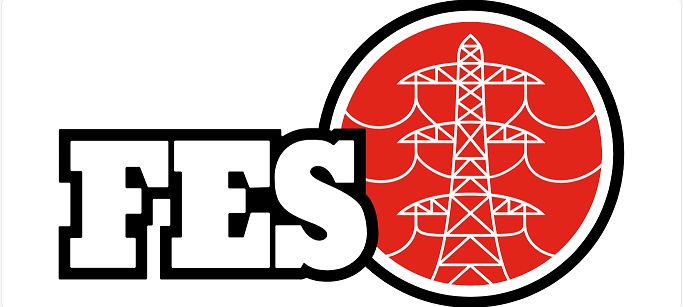We are One Carbon World.
Our experts support organisations on their journey to Net Zero.
Proud to partner with:




We exist to enable the transition to a prosperous net-zero world
At One Carbon World, a leading not-for-profit, we assist businesses and organisations by helping them measure and verify their carbon emissions. Our experts also offer support throughout their entire journey to Net Zero, by developing Carbon Removal Inventories, helping align their target setting with the Science-Based Targets initiative (SBTi), and creating nature-based solutions, among other services.
Access 50% funding to support your organisation's Net Zero journey
From carbon footprint assessment and setting science-based targets to carbon removals, subsidised carbon credits and complementary comms support—we've got you covered. All businesses, large and small, within any sector, are eligible to apply. Explore our grants and start your journey today!
Funding received by:


As a not-for-profit organisation, we reinvest our profits into grant funding


Grant recipients:

.png)
.png)



%201.png)





.png)
.png)



%201.png)





.png)
.png)



%201.png)




Achieve best in class, international standards & certificates with One Carbon World
Our experts offer comprehensive support in measuring or verifying your organisation footprints, setting targets and providing recommendations on reduction of emissions – which also can save you money!


How can your business achieve
Net Zero in 3 simple steps
Designed to simplify the path to net zero, our 3 step process provides the tools and expertise you need to achieve our standards. The OCW Grant Fund provides 50% support to cover the costs of this process.

Measure
GHG protocol compliant corporate emissions footprinting and Verified Carbon Removals (VCR) to comprehend net position and baseline. Set actionable plans to achieve your Science Based Target (SBT).
Reduce
Emissions hot spotting to identify quick wins and longer-term reduction strategies. Specialist advisors in agricultural supply chains and supplier engagement for collaborative reduction.

Rebalance
Support existing carbon removal projects by buying carbon credits, or establish your own SBTi compliant, nature-based removals project. Reduce business risk and deliver well governed environmental, social benefit (ESG).

One Carbon World at COP30
One Carbon World is proud to be part of the 30th annual Conference of the Parties (COP30), hosted in Belém, Brazil. Our team members are taking part both in person and online, attending and chairing events that highlight our expertise and climate action advocacy. Through the UK COP30 Pavilion, we are showcasing our projects and the vital work we do to help organisations reduce emissions, drive sustainability, and champion the importance of collective climate action. This video offers a glimpse into some of our initiatives and projects, and the impact we are making together.
Listen to Sustainability Heroes. Real stories. Real impact. Real change
22.5M
Our podcast campaign has reached more than 22.5M people worldwide.
Top 5%
Top 5% of podcasts worldwide in December 2022 and November 2023.
23 countries
We’ve reached over 23 countries across the globe.

BE THE CHANGE IN 2022, with Ben Fogle
A series of conversations hosted by Ben Fogle and in collaboration with the United Nations Climate Neutral Now Initiative. The main goal of this podcast ...


BE A NET ZERO HERO, with Lucy Siegle
Hosted by Lucy Siegle, the Be A Net Zero Hero podcast delves into the world of climate action. Part of the Be The Change series, One Carbon...

Impact Stories
Connect with us
Frequently asked questions
Find answers to commonly asked questions about our services and initiatives.
Each organisation has a unique and different carbon footprint. That is why One Carbon World and its team of technical experts can now report on over 7000 calculations. Our team will guide you through this process and will help you to measure your Scope 1, 2 and 3 emissions. We first invite you to select a date and time for a phone consultation with your dedicated technical expert. During the technical call, our expert will explain the emissions sources that we will include and the methodologies we will apply. We will guide you through the data collection procedure and also review any data you have already collected, if applicable. We always attach a guide for data collection for reference. If you have made a self-assessment of your carbon footprint we will talk you through the OCW UN approved verification process. Once we receive your data, our experienced team of carbon auditors will calculate your carbon footprint, and this will be sent for independent external validation.
At the global level, the IPCC defines net-zero as the point at which “anthropogenic emissions of greenhouse gases to the atmosphere are balanced by anthropogenic removals over a specified period”. Achieving net-zero is a strategic approach focused on minimising the net environmental impact, ensuring that global emissions are reduced and rebalanced through initiatives like investing in renewable energy projects or adopting nature-based solutions.
What does it mean to reach net-zero emissions at the corporate level?
To reach a state of net-zero emissions for companies consistent with achieving net-zero emissions at the global level in line with societal climate and sustainability goals implies two conditions:
1. To achieve a scale of value-chain emission reductions consistent with the depth of abatement achieved in pathways that limit warming to 1.5°C with no or limited overshoot and;
2. To neutralise the impact of any source of residual emissions that remains unfeasible to be eliminated by permanently removing an equivalent amount of atmospheric carbon dioxide.
Companies may reach a balance between emissions and removals before they reach the depth of decarbonisation required to limit warming to 1.5ºC. While this represents a transient state of net-zero emissions, it is expected that companies will continue their decarbonisation journey until reaching a level of abatement that is consistent with 1.5ºC pathways. IPCC & SBTi
Every organisation that measures/verifies its emissions with One Carbon World, achieves the Carbon Neutral International Standard or the Net Zero International Standard. Our recognised Carbon Neutral International Standard and Net Zero International Standard are based on a series of steps, and we provide comprehensive support, robust certification and verification, and first-class assessment. There are a set of minimum requirements to achieve the Standard, but we also encourage our partners to adopt best practices where possible, in order to achieve recognition and market-leading status. This means that your organisation will be measuring your emissions to the highest standards of the industry, in line with the Kyoto Protocol and the Greenhouse Gas Protocol, as well as meeting the reporting requirements of the GHG Protocol Corporate Standard and compatible with international standards ISO 14064 and PAS 2060.
To apply to the OCW Grant Fund, you can click the "Get Started" at the top of our page or simply send us an email at hello@onecarbonworld.com. Our team will guide you through the application process, providing support and assistance as needed. We are committed to facilitating your efforts in contributing to meaningful carbon reduction and projects through our Grant Fund.
The carbon footprint is quantified in tonnes of CO2e, and visualising this amount can provide context. Consider the following examples:
- 120,000 smartphone charges.
- Heating an average-sized apartment for two months.
- 72 trips Amsterdam to Paris with the Thalys.
- The amount of CO2 absorbed by a beech tree during around 80 years of growth.
- If one tonne of CO2 were compressed into a gaseous state, the resulting cube would have edges measuring eight metres under normal conditions






.png)

%201.png)





%201.png)






